The Queen who brought about the union
of England and Scotland
Queen Anne came to power as the Queen of England, Scotland and Ireland in 1702, after the death of her brother in law King William III. She reigned until 1707 when the Acts of Union joined the crowns of England and Scotland under one title and gave Queen Anne the order; Queen of Great Britain and Ireland, which she held until her death in 1714.
Queen Anne’s life was plagued with illness, with terrible cases of gout which for a long period left her immobile and lead to continual weight gain. She, however, continued ruling through this pain and the trouble between the Tories and Whigs in parliament, to bring the union of Great Britain, and a peaceful resolution to the War of the Spanish Succession.
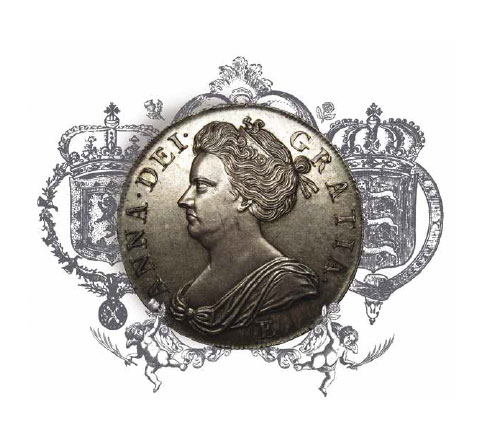
What makes this particular 1707 Crown so special is the past ownership of it. After the death of the 2nd Marquess of Bute in 1848, an academic with numismatic interests, Jonathan Rashleigh, was allowed to view the Bute collection of coins. He subsequently published “A brief notice of the Bute collection of Medals and Coins”, noting that the collection had originally been formed by the 3rd Earl of Bute, John Stuart (1713-1792) the 6th Prime Minister of Great Britain, and consisted of some 4,700 pieces.
He also noted that the finest specimens in the English part of the collection were – “a small naval medal, in silver, of the Commonwealth, by Simon; a silver pattern for a farthing of Charles II., with three pillars; a crown and half-crown of Queen Ann, with ‘E’ below the bust. These last coins are as fine as patterns and are as beautiful as if just from the mint.”
It is almost certain that the ‘Anne Crown with an E below the bust’ is the coin listed here and this not only confirms its whereabouts a further century before the collection was sold, but also emphasises the importance of this “1707 Edinburgh coinage set” to the collection as a whole.
This symbolic Edinburgh mint series, the first to be struck after the Act of Union between the crowns of England and Scotland in May 1707, is even more relevant when one considers that John Stuart, as private tutor of King George III was to become First Lord of the Treasury (Prime Minister) of Great Britain, and as such the first Scotsman to hold the office. Given his interest in coins and closeness to the King, it is very feasible that these coins were presented to him – although, unfortunately, no records survive at Mount Stuart to substantiate this. Furthermore, John Stuart’s grandfather Sir James Stuart had fought passionately against the union of England and Scotland and left Parliament after its ratification. Consequently, it is very unlikely that the ‘set’ was acquired from the mint by this earlier Stuart family bearing in mind their thoughts on the union.
Other examples from this reign…
-
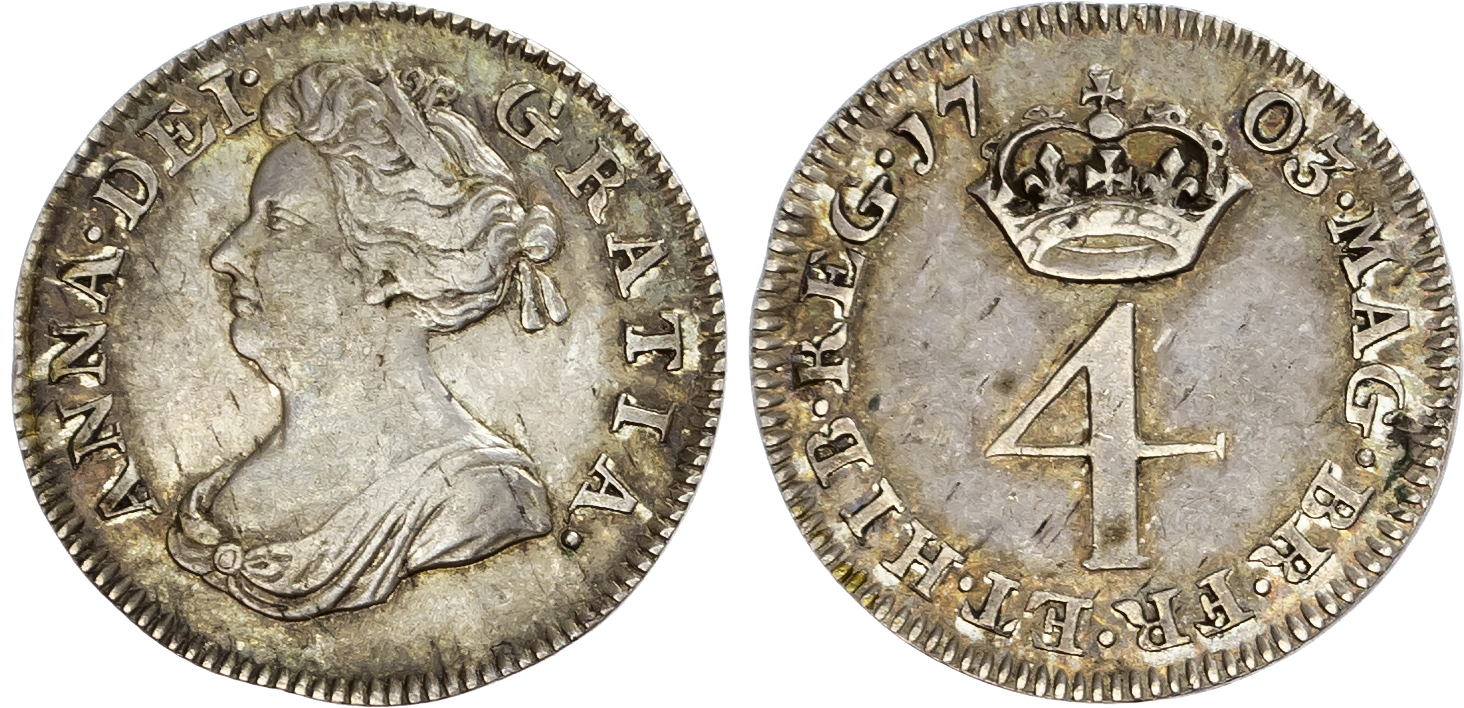 Anne (1702-1714) Maundy Set, 1703, Fourpence, Threepence, Twopence, Penny
Anne (1702-1714) Maundy Set, 1703, Fourpence, Threepence, Twopence, Penny -
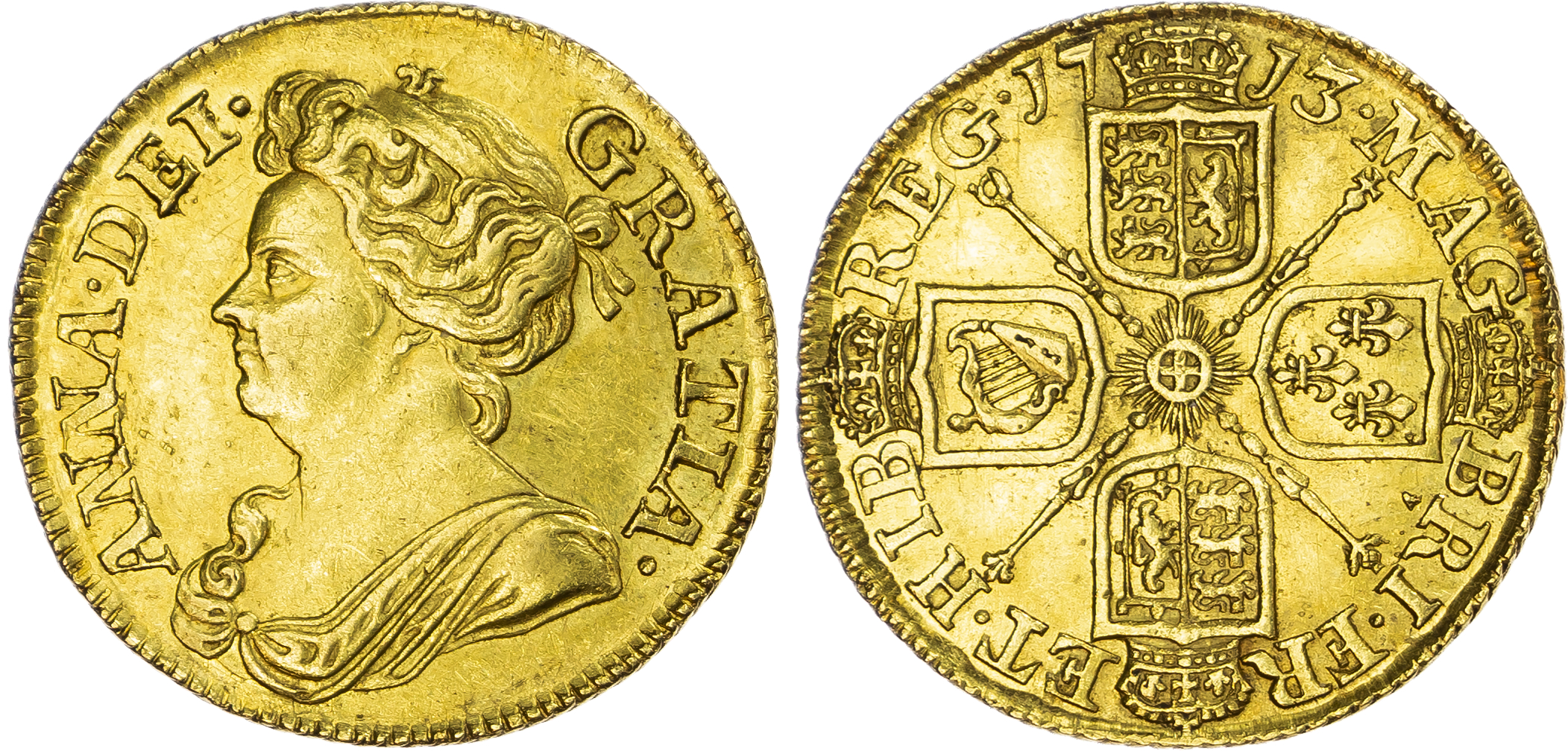 Anne, Guinea, 1713
Anne, Guinea, 1713 -
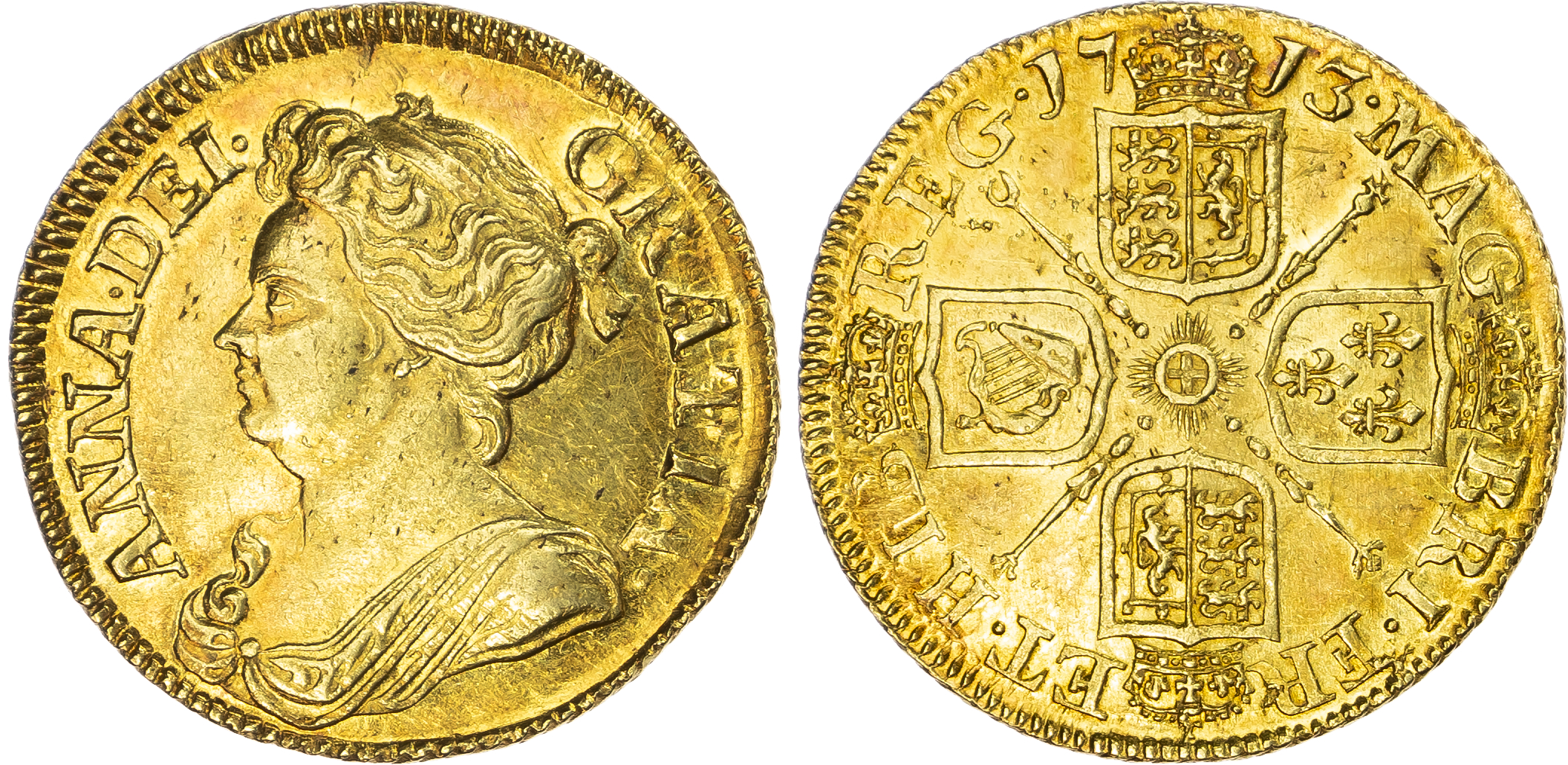 Anne, Guinea, 1713£13,950.00
Anne, Guinea, 1713£13,950.00 -
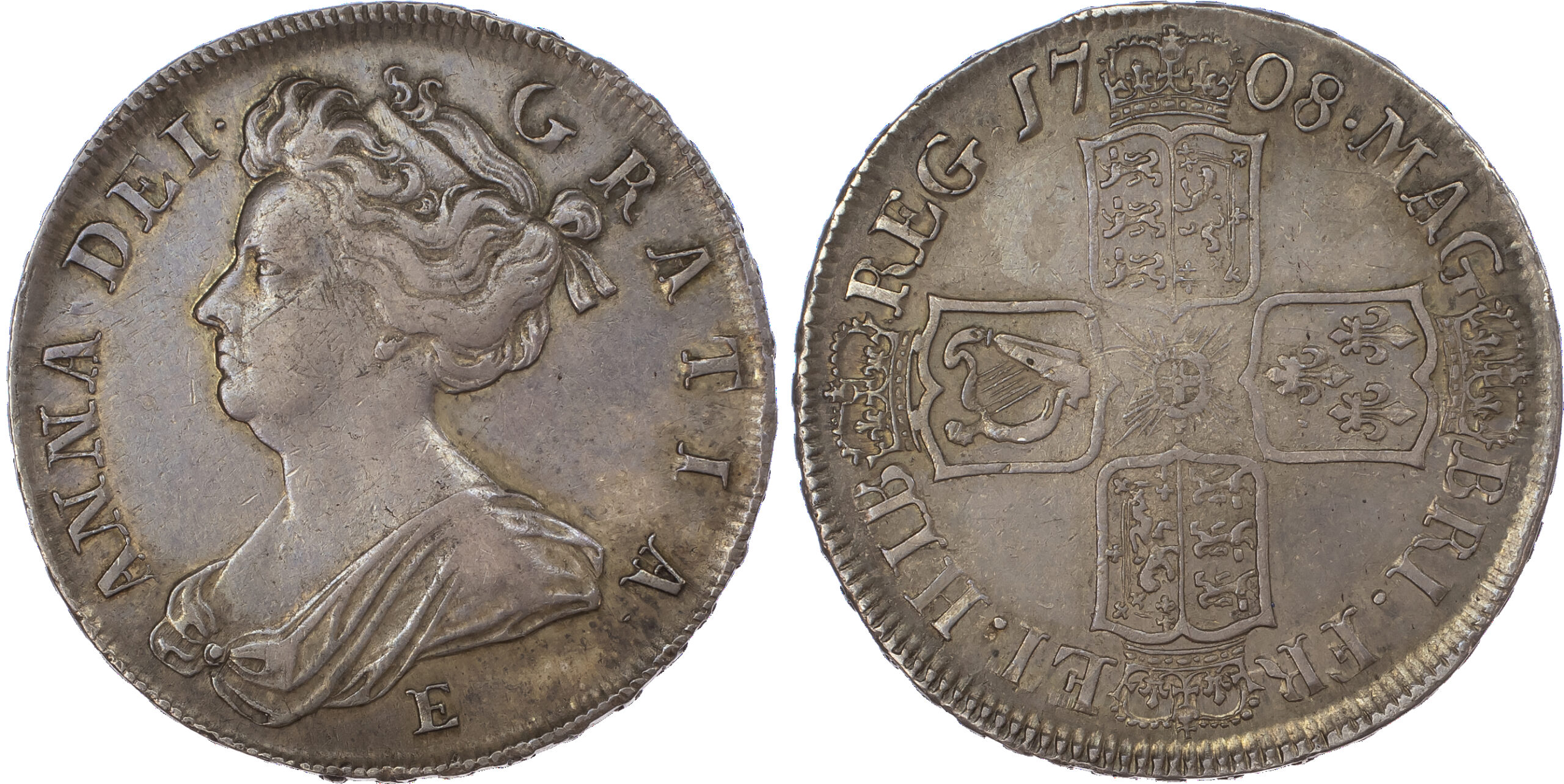 Anne, Halfcrown, 1708
Anne, Halfcrown, 1708 -
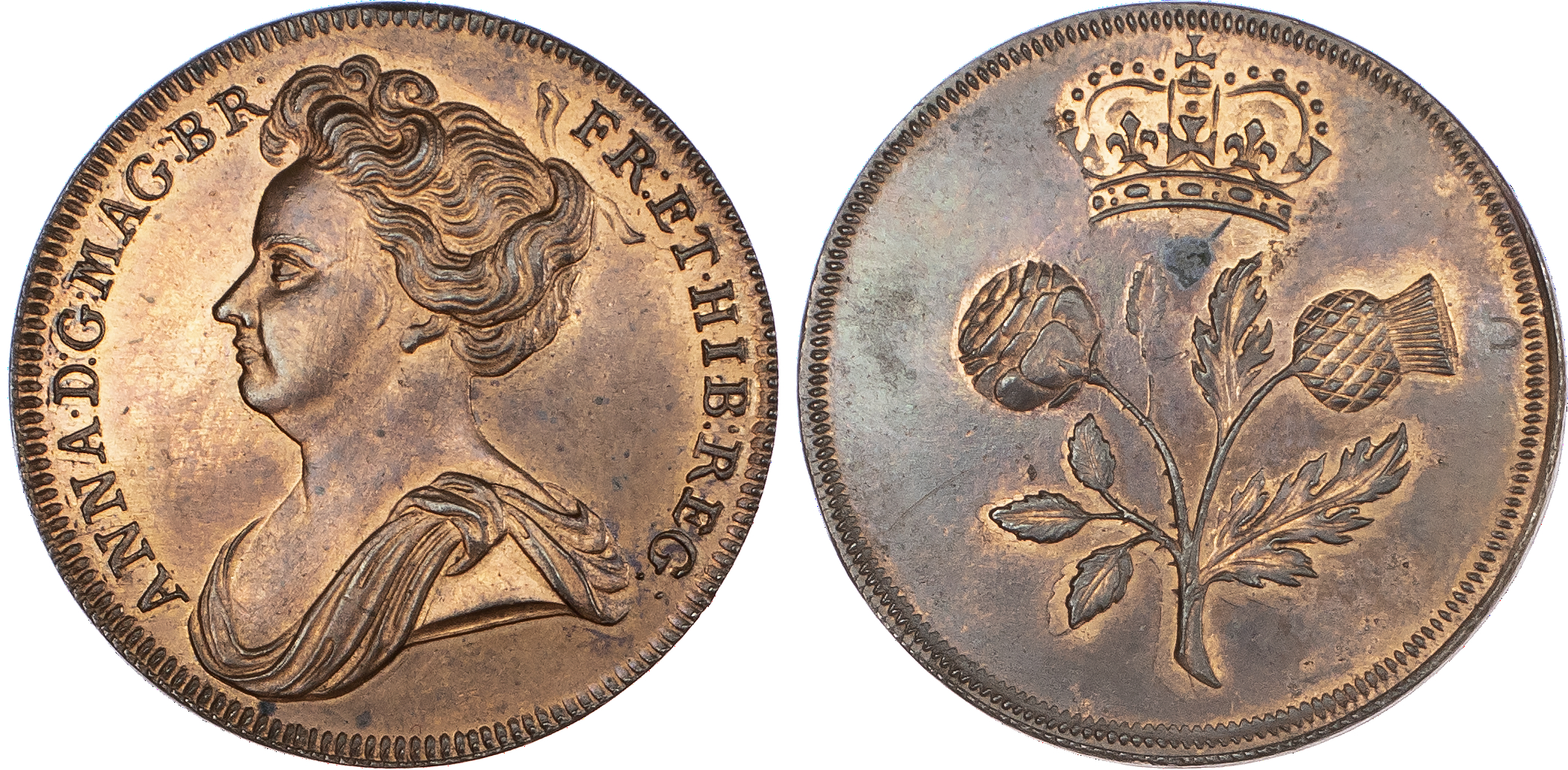 Anne (1702-1714). Post Union. Pattern Copper Halfpenny by Crocker,
Anne (1702-1714). Post Union. Pattern Copper Halfpenny by Crocker, -
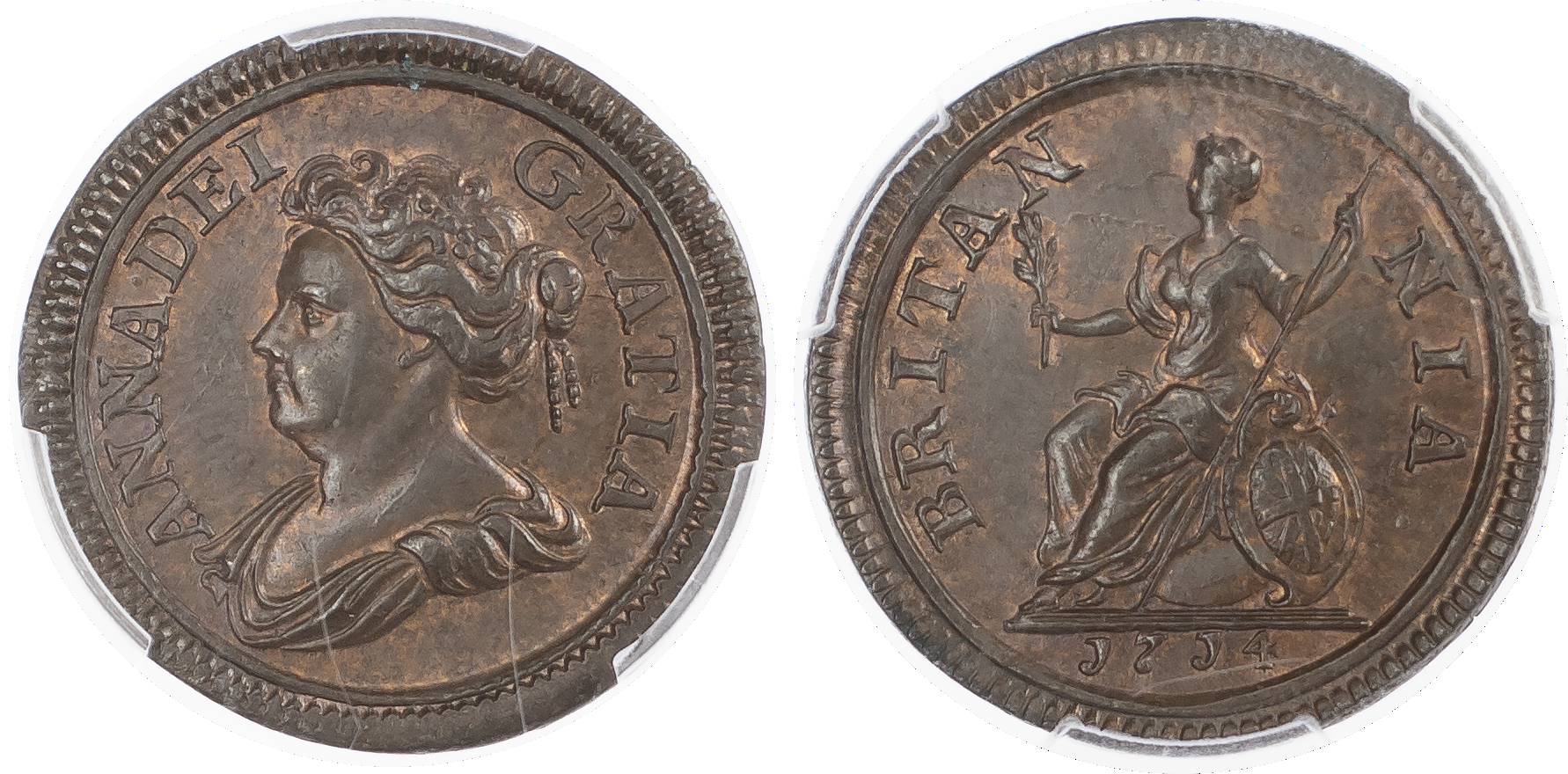 Anne (1702-14) Copper Specimen Pattern Farthing, 1714
Anne (1702-14) Copper Specimen Pattern Farthing, 1714 -
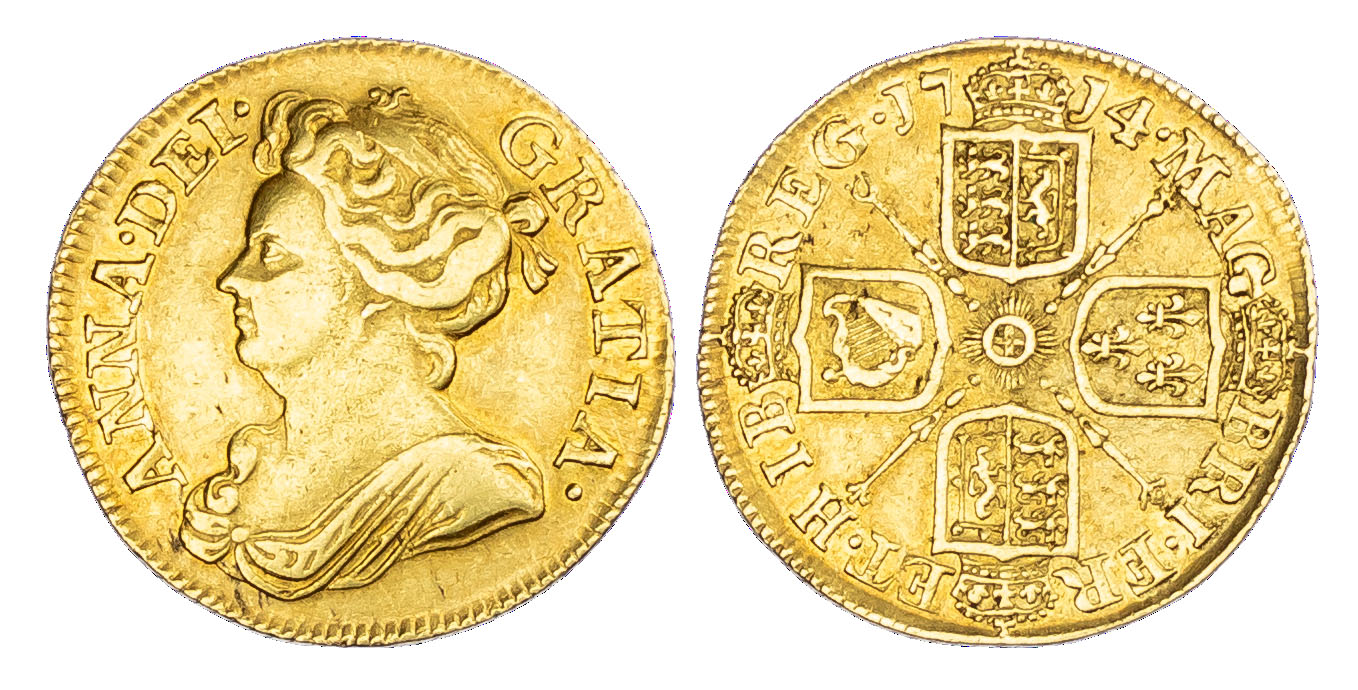 Anne (1702-14), Guinea, 1714
Anne (1702-14), Guinea, 1714 -
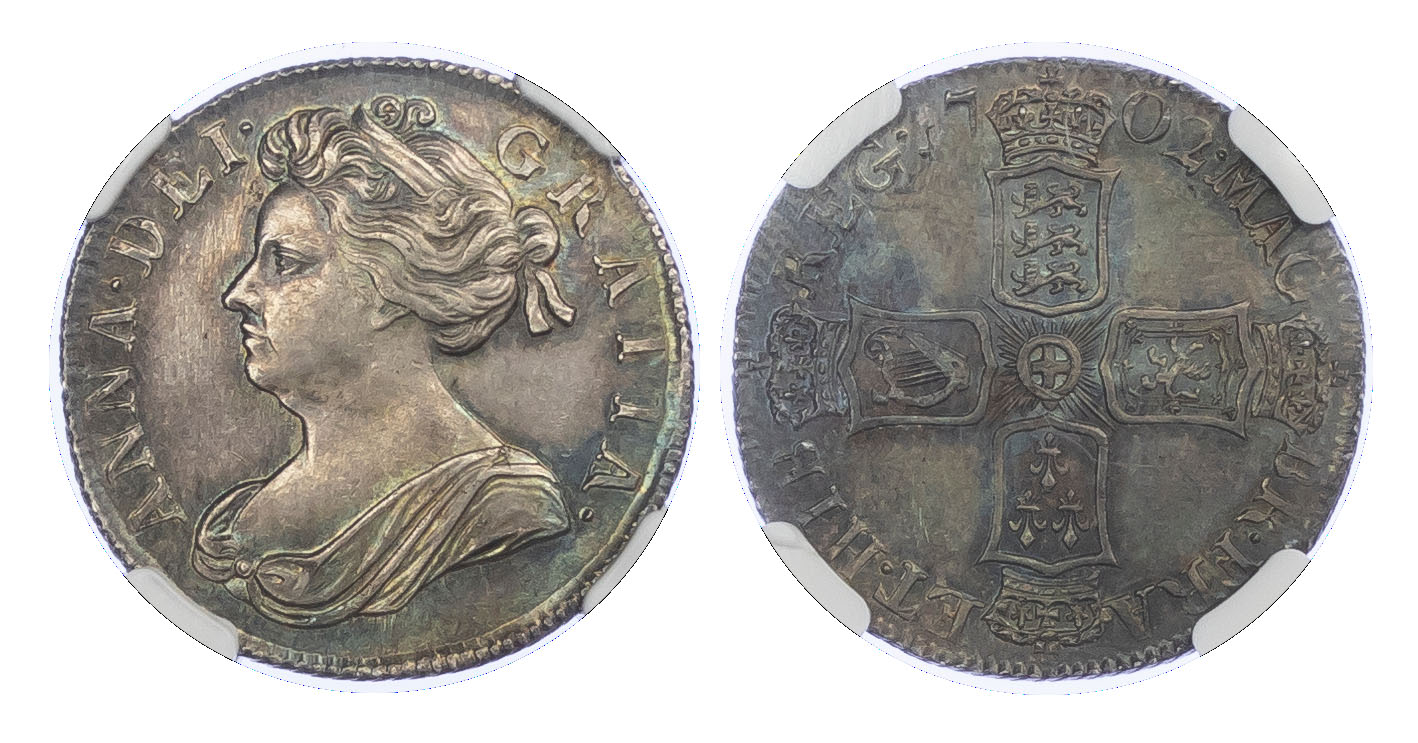 Anne (1702-14), Shilling, 1702, MS 63 NGC£4,500.00
Anne (1702-14), Shilling, 1702, MS 63 NGC£4,500.00 -
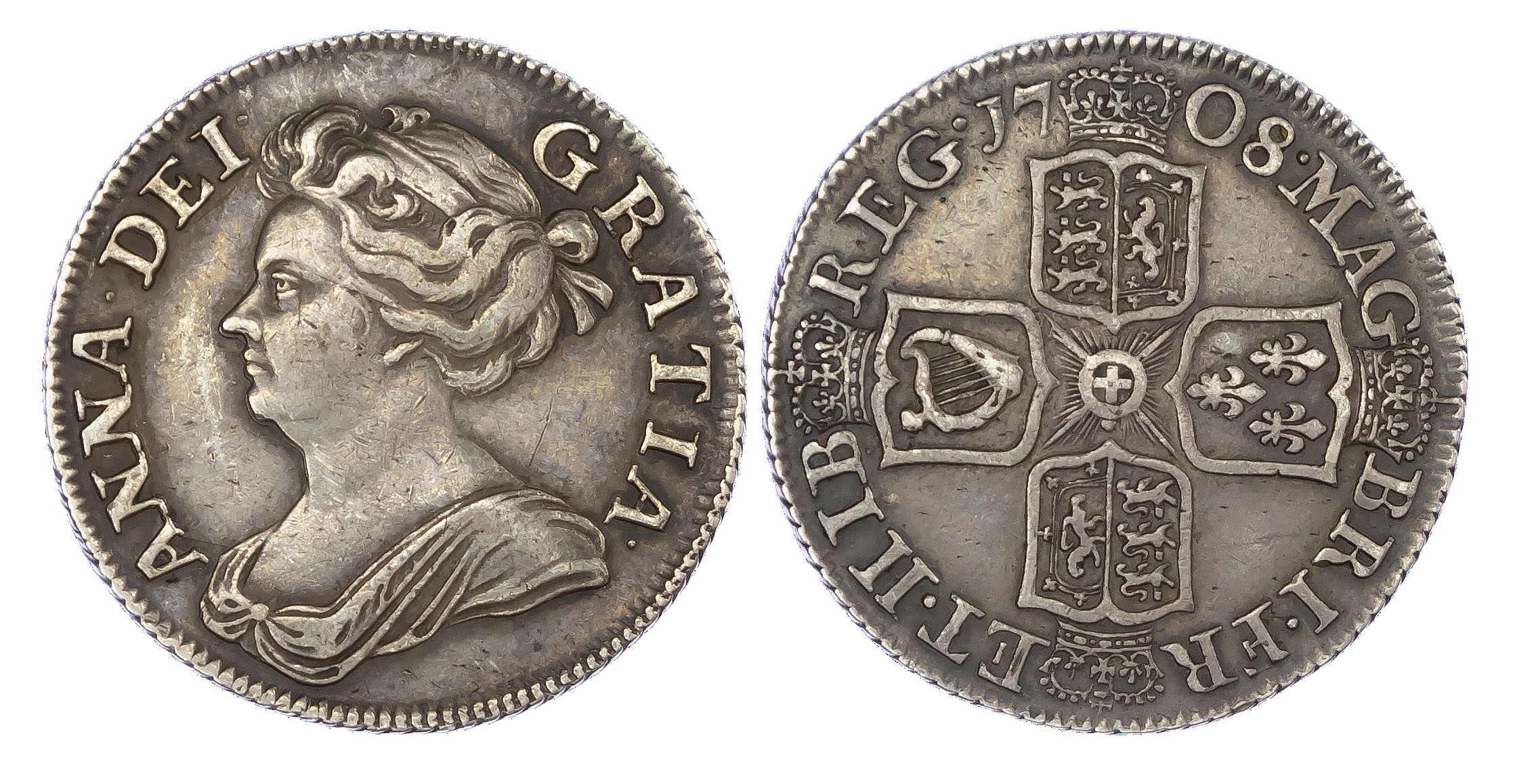 Anne (1702-1714), Shilling, 1708
Anne (1702-1714), Shilling, 1708 -
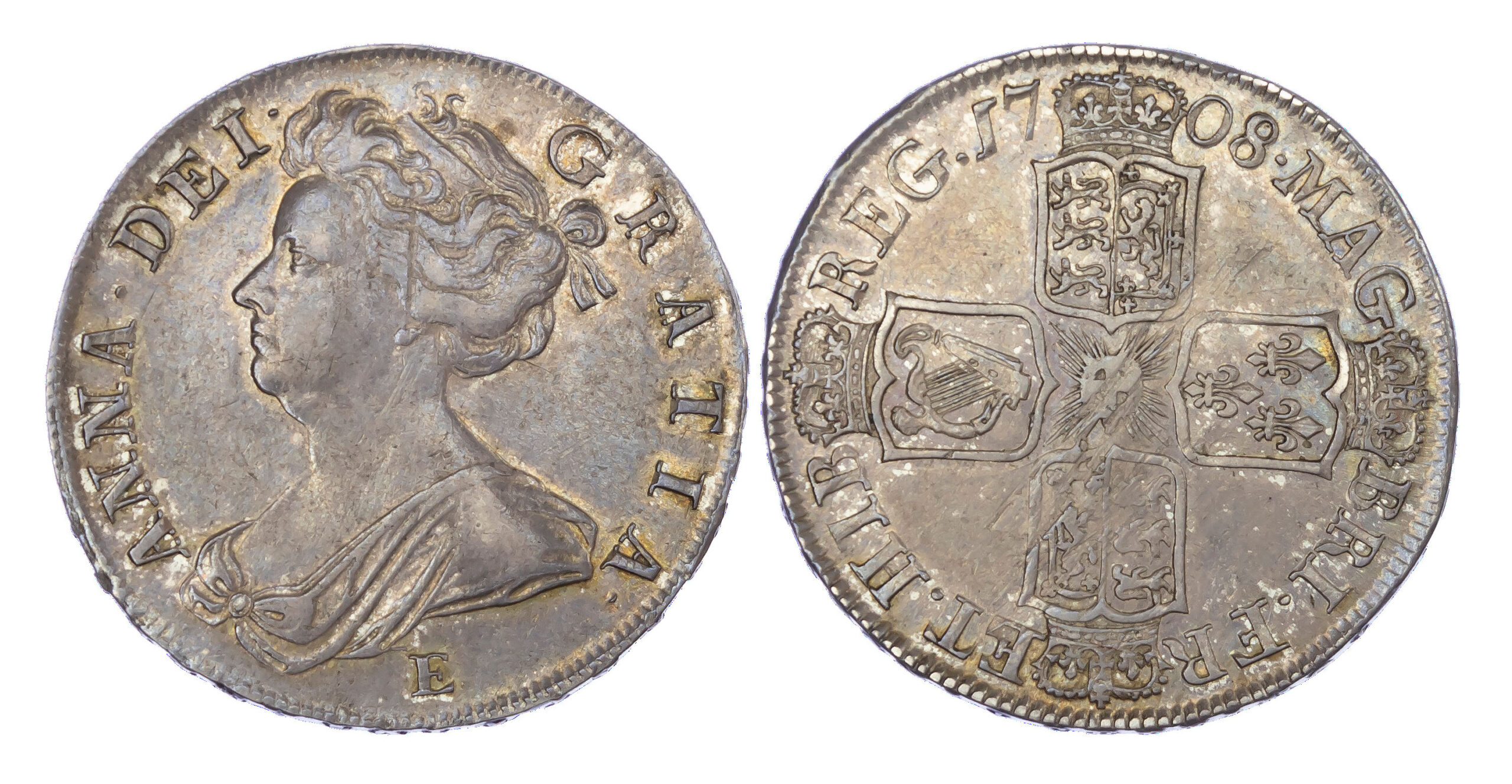 Anne (1702-14), Halfcrown, 1708, Edinburgh
Anne (1702-14), Halfcrown, 1708, Edinburgh -
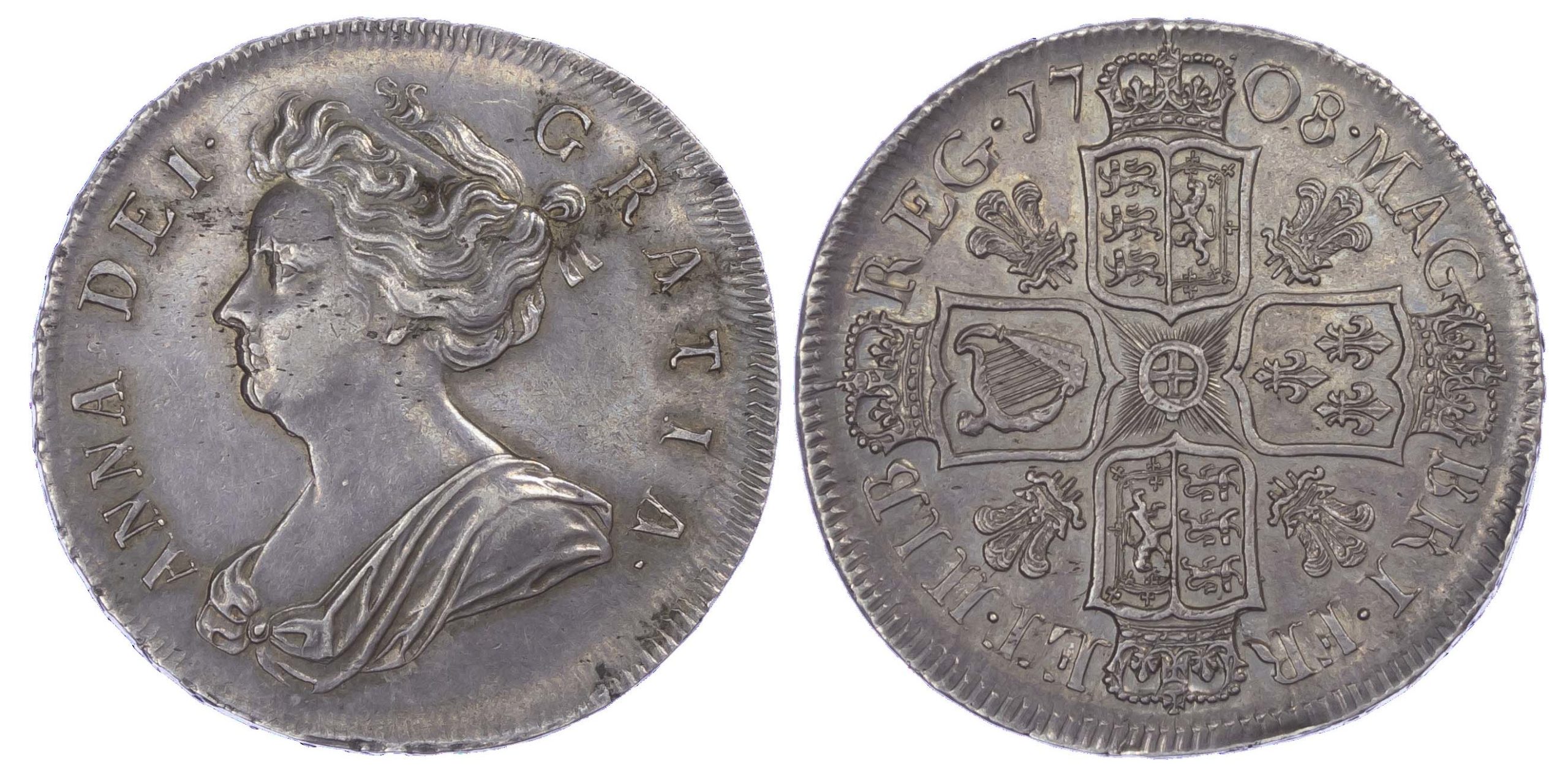 Anne (1702-1714), Halfcrown, 1708, Septimo – Plumes in angles
Anne (1702-1714), Halfcrown, 1708, Septimo – Plumes in angles -
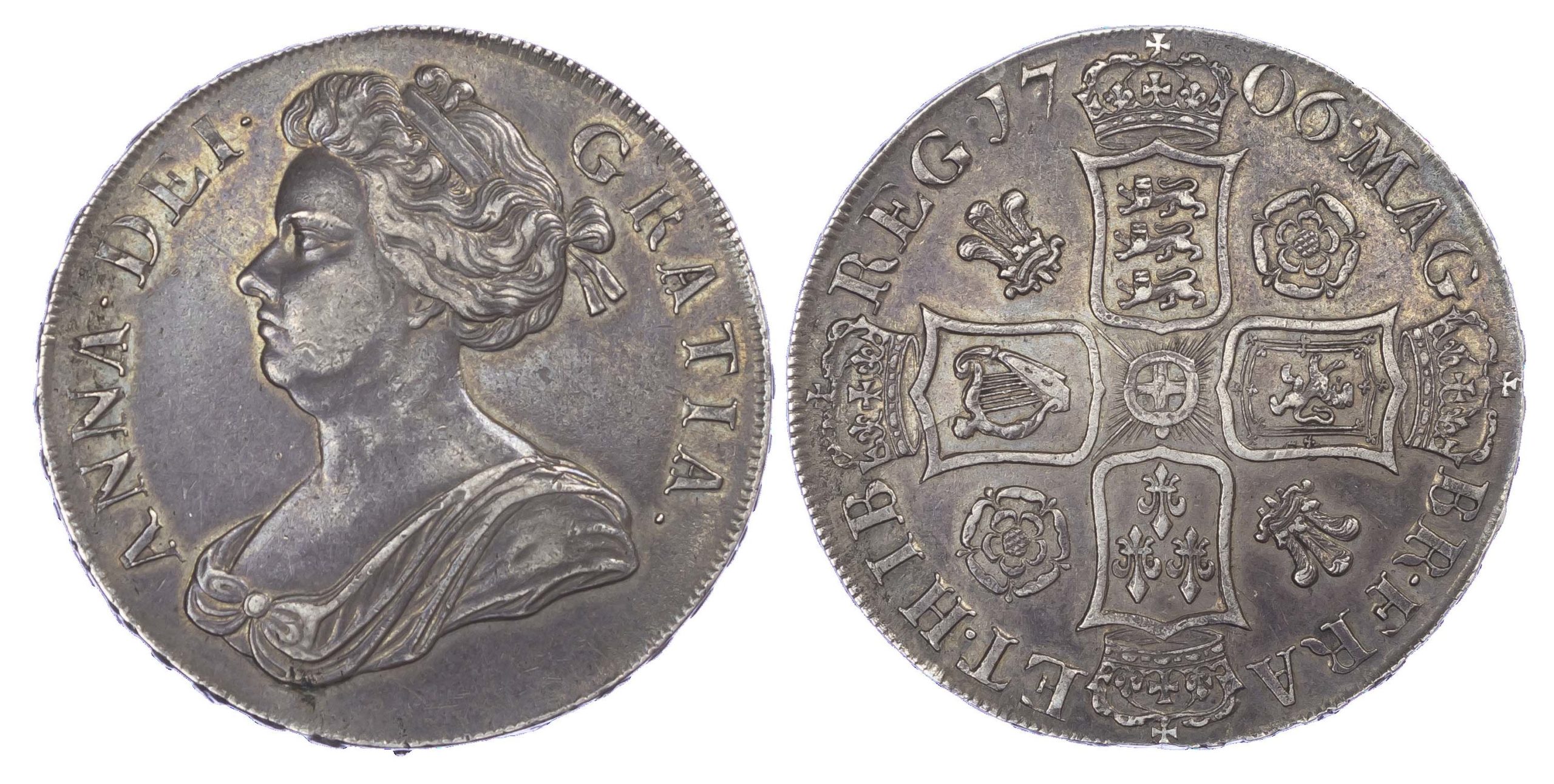 Anne (1702-14), Crown, 1706, ‘Roses & Plumes’
Anne (1702-14), Crown, 1706, ‘Roses & Plumes’
